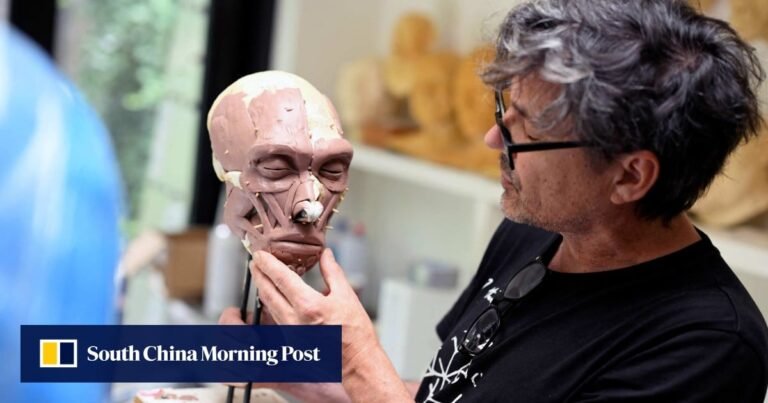With her clear blue eyes and slightly nervous gaze, the reconstructed bust of Mos’anne – a woman who lived about 10,500 years ago – is uncannily lifelike.
Reborn via a close partnership between science and art, Mos’anne’s bust was created at Belgium’s Ghent University as part of a project to explore how the region’s last hunter-gatherers lived during the Mesolithic era.
“Part of the project is also understanding the genetics of these people, figuring out their kinship and so on, and to be able to really translate the science that we do to a wider audience,” said the project’s lead researcher, Isabelle de Groote.
Scientists chose the skull of Mos’anne – named by public vote in reference to Belgium’s Meuse Valley – for reconstruction, as it was exceptionally well-preserved.
The bones held a large amount of preserved DNA, making it possible to reconstruct the woman – aged between 35 and 60 at her death – with remarkable realism.
“We also know that in the Mesolithic times, she is genetically part of the Western hunter-gatherer group,” de Groote said.





